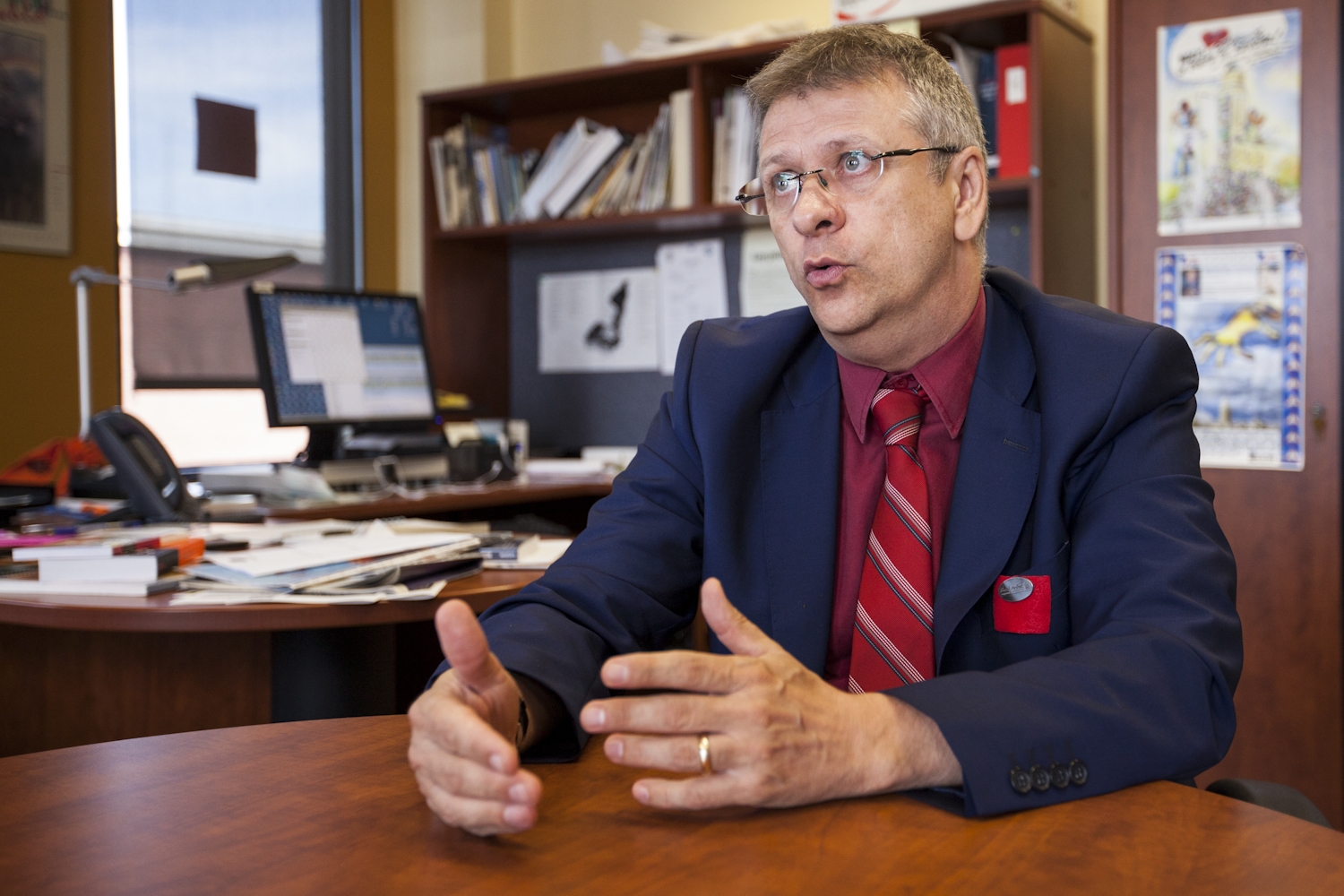On the eve of the Quebec election, rabble.ca is proud to showcase profiles of nine individuals amongst the hundreds of thousands who have proudly worn the red square of solidarity with the historic Quebec student strike.
Contrary to the wishes of Quebec’s establishment, tomorrow’s vote, regardless of the result, will not mark the end of what has come to be known as the Maple Spring. The impact and the inspiration provided by Quebec’s carrés rouges, which has spread all across Canada and even around the world, will long outlast Jean Charest.
Journalists Jane Gatensby and Nicolas Quiazua compiled these profiles over several weeks this summer. We will feature them throughout today and tomorrow, Labour Day and Election Day in Quebec. The series begins with this profile of Francis Lagacé, a leader in Quebec’s union movement.
*
In Quebec, since 2005, thousands of students have worn red squares in opposition to the tuition hikes that have polarized the province. This spring, members of the wider society adopted the protest symbol in large numbers, associating it with a multitude of other social concerns.
With tomorrow’s election looming and classes forced to re-convene under Law 12 (previously known as Bill 78), much is uncertain about the future of the carrés rouges (red squares).
The following is the result of a month of interviews with various members of this informal and diverse group — students, professionals, public figures and activists — all with a conception of society that diverges from the path set by the current government. Together, they form a portrait of a resolute but worried segment of Quebec society, wondering what this fall will bring.
As August drew to a close, some of the uncertainty spoken of by our interviewees had cleared away. Despite CLASSE’s urging for a prolongation of the strike, all cégep student associations have voted to go back to class (at least for the remainder of the elections), and most university associations have followed suit.
With the Parti Québecois leading in the polls, many in the movement are wondering whether election day will mean a resolution to what we’ve seen over the past seven months — conflict and crisis, yes, but also creativity, ideas, solidarity and hope.
When looking back at the largest student strike in Quebec’s history, it will be interesting to see in what way the student movement and its supporters, united by a common symbol, will have left their mark on Quebec.
*
Francis Lagacé: Quebec student movement has been ‘a flame of hope’
We meet with Francis Lagacé in late July at the Montreal headquarters of the Confédération de syndicats nationaux (CSN), next to the Champlain bridge. Lagacé is the vice-president of the Montreal chapter of this 300,000 member workers’ union, and like most people at his workplace, he wears a red square neatly on his lapel.
A self-proclaimed “longtime activist” for numerous causes, Lagacé thinks of the student movement as a “flame of hope.” He says he has marched with his union at the national protests on the 22nd of every month, and points out that free education “is the position of the entire CSN.”
Lagacé has some experience with striking, and he asserts that the student strikes are indeed worthy of their name. He scoffs at the use of the word “boycott” in the student context. “A strike is a collective cessation of activities. You don’t boycott food, you go on a hunger strike!”
Of course, the student movement and Quebec’s union establishment are not ideological twins. The CSN was involved in May’s attempt at negotiation between government and the student groups, but the resulting agreement was later voted down by student assemblies. Is there a conflict, we ask, between the unions’ habitual cooperation with the government and the values of student associations?
“The unions are used to negotiating […] we take a vote for conciliation, mediation,” he says. And how do they see the students’ government-wary approach? “It complicates things for us, sure,” he admits. “But I think you have to accept the plurality of the student movement, and we’ll make our decisions according to our own structures, our own ways of operating.”
Lagacé became involved in the CSN while working as a university course lecturer. He calls Law 12 “absurd,” and worries about what it will mean for fellow teachers.
“The students will be forced to go back to class. The teachers will be forced to force the students to go into their classes, will be forced to stop students from stopping other students from coming to class,” Lagacé deplores. He’s glad that his position at the CSN keeps him from facing this possibility. “To go against my convictions, to teach under constraint […] I think I would become ill,” he says.
*
You can read the other profiles by following these links:
*
Jane Gatensby is a news reporter for The McGill Daily and a contributor to Ceasefire Magazine. Nicolas Quiazua is Editor-in-Chief at Le Délit.
The interview for this profile was conducted in French and translated by Jane Gatensby.
Photo by Nicolas Quiazua.



